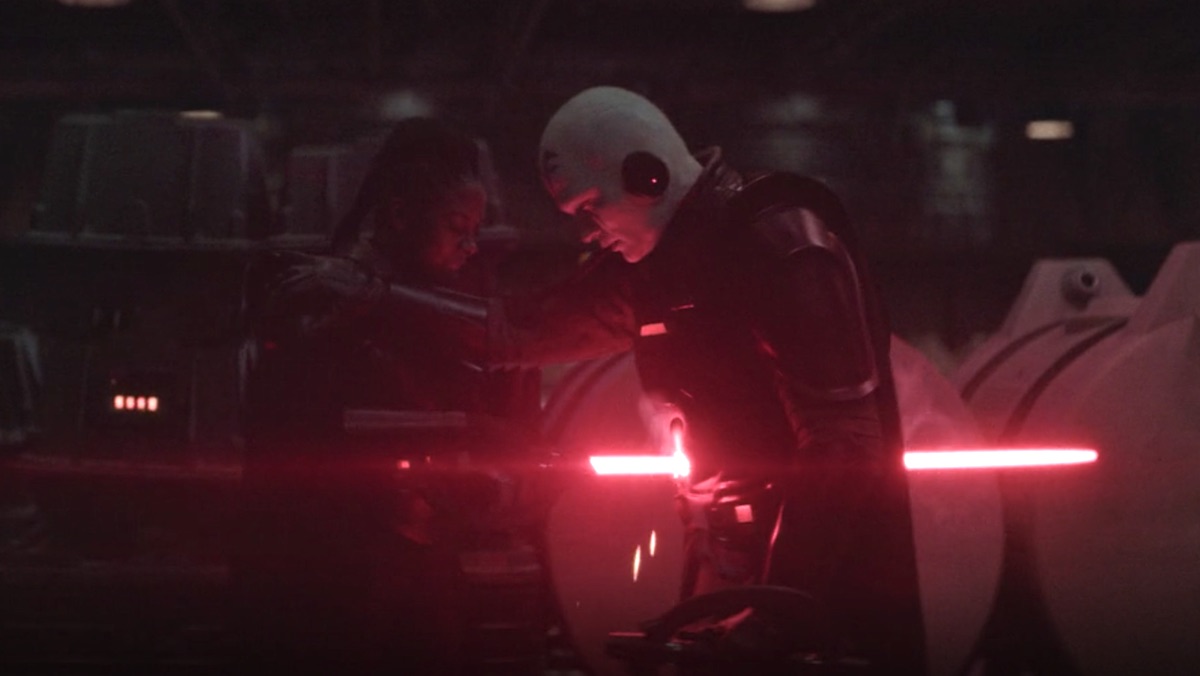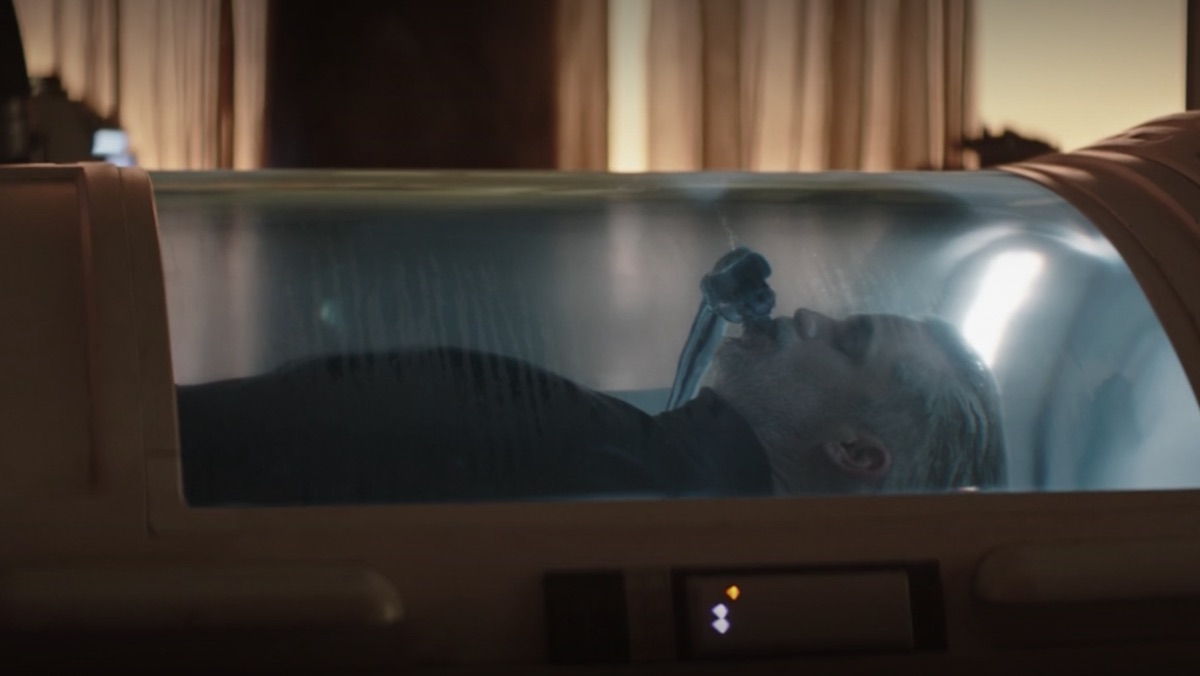When Reva put her lightsaber through the Grand Inquisitor’s stomach in Obi-Wan Kenobi‘s second episode, she seemingly put a lightsaber through Star Wars canon. The leader of the murderous group of Force users is a major character in season one of the animated Star Wars Rebels. He dies years after the events of the newest live-action Disney+ show. So did the Third Sister rip a hole in his story when she ripped a hole in his belly? No, all she did was begin a new chapter in one of the franchise’s most sinister tales. Because dark side users have repeatedly used their powers to cheat death. But like those before and after him, the Grand Inquisitor will never truly fulfill the horrible promise of Darth Plagueis.
The Grand Inquisitor Is Not Dead…Yet

We covered the history of the former Jedi Temple Guard-turned-Jedi hunter before Obi-Wan Kenobi premiered. Fans of the galaxy far, far away first met the Grand Inquisitor on Star Wars Rebels. That’s why we were not prepared for his “death” on the Disney+ series. We’ve already seen him in the “future.” He’s very much alive within the Star Wars timeline roughly five years after Obi-Wan Kenobi takes place. That is until he falls to his death after a battle with Kanan Jarrus and not at the hands of a fellow Inquisitor.
If Reva had really murdered her boss that would obliterate official canon like the Death Star did Alderaan. And that’s something series head writer Joby Harold told Variety the show absolutely would not do. “Canon is everything,” he said. While he was coy about explaining what that specifically means for the character’s fate on Obi-Wan Kenobi, it confirms what we thought the minute the Grand Inquisitor ate that red lightsaber: he’s not actually dead, despite what the Third Sister believes.

(We think too highly of the show so far to entertain the possibility its Grand Inquisitor—-who has the same accent, teeth, face markings, duel spinning lightsaber, and speech pattern as the one from Rebels—is not the same character as the animated version. If that turns out to be the case we’ll cover what it means. That post would definitely include many synonyms for”disappointed” and “lousy.”)
How Could the Grand Inquisitor Survive Reva’s Attack on Obi-Wan Kenobi?
Star Wars has a long history of characters cheating death. Luke Skywalker survived a near fatal encounter with a wampa in The Empire Strikes Back. Boba Fett climbed out of a sarlacc pit on his own show. And Fennec Shand and Cobb Vanth both took close blaster shots that probably should have killed them. None of that even covers Force ghosts, which involve people dying but overcoming death by becoming one with the Force itself.

Luke was right when he told Leia, “No one’s ever really gone.” In Star Wars sometimes you do your best work after everyone thinks you died. And it’s not like the Grand Inquisitor suffered an injury as bad as some other characters. A few trips to an Imperial-grade Bacta tank, a timely visit to a good mod doctor, or a little bit of both, could have him back and up on his feet in no time. It’s the exact same wound Kylo Ren overcame in The Rise of Skywalker. (Though he had a big sacrificial assist from his powerful Force sensitive mother.)
But the Grand Inquisitor might not even need medical care to make it. He has an inherent edge over most people in dealing with death. Following the dark side helps its adherents achieve one of pop culture’s most sinister promises. It’s the promise Sheev Palpatine once used to lure Anakin Skywalker to join him.
The Power of the Dark Side to Cheat Death

Anakin did not follow Palpatine to the dark side because he craved political power. He followed Palpatine because he thought it was the only way to save Padmé. Anakin’s recurring visions of her death drove him to madness. When confronted with the possible demise of the only person he believed could help keep her alive, he opted to kill Mace Windu and embrace the Force’s evil half.
Palpatine had originally put that idea in Anakin’s head during a performance at the opera. Palpatine told Anakin about “the tragedy of Darth Plagueis the Wise.” It was a legend about a Sith Lord so powerful he could manipulate midi-chlorians to create life. “He had such a knowledge of the dark side, he could even keep the ones he cared about from dying.” When Anakin asked the Chancellor if that was a real ability, Palpatine said, “The dark side of the Force is a pathway to many abilities some consider unnatural.” And nothing is more unnatural than cheating death.

While Plagueis could not save himself from death, the promise of his legend has proven true countless times in Star Wars. The strongest dark side users have managed to survive injuries no one should have lived through. Darth Maul got cut in half in The Phantom Menace and returned as half Dathomirian/half mechanical spider. A literal lava bath wasn’t enough to take out Anakin Skywalker in Revenge of the Sith. And, of course, Palpatine returned decades later.
That isn’t just a coincidence, either. Darth Maul managed to evade certain death in part because of his connection with the dark side. His hatred for “Kenobi” was so strong it helped keep him alive, same as Darth Vader on Mustafar. Anakin screamed about his hatred for his master while he barely clung to life. And the most powerful Sith of them all, Darth Sidious, was able to avoid a full death for longer than anyone. His connection to the dark side was so strong it took two massively powerful Force users, calling on the strength of all the Jedi before them, to kill him for good. That’s a far cry from the scientific methods used to save normal people. And it’s the complete opposite of what Jedi embrace when they become one with the Force.
An Unnatural Search for the Ultimate Power

Just like Sauron and Voldemort, two of Palpatine’s pop culture super villain counterparts, the Emperor’s darkest crime was trying to defeat death. To the worst of us, there’s no greater enemy than the one that comes for everyone. But death’s role in life is why Jedi become one with the Force while the Sith fight it. Those who follow the light side of the Force embrace the inevitable for what it is. All living things give the Force its power, and it’s the Force that binds the galaxy together. Death is the great equalizer and the great uniter. By cheating death the Sith seek to defeat the Force. It’s why the power of the dark side corrupts the soul even as it keeps the body alive.

And it will likely help keep the Grand Inquisitor’s body alive long enough to get him help. He already hated Reva before she stabbed him. The rage he felt as her lightsaber burned inside him, fittingly, will ensure he lives to hunt another day. Don’t worry, though. That’s bad news for Reva, but not for everyone in the galaxy far, far away. Darth Plagueis couldn’t save himself. Neither could Palpatine. Because in the end hate is not powerful enough.
The Grand Inquisitor isn’t dead, but his day is coming. We’ve already seen it happen.
Mikey Walsh is a staff writer at Nerdist. You can follow him on Twitter at @burgermike. And also anywhere someone is ranking the Targaryen kings.